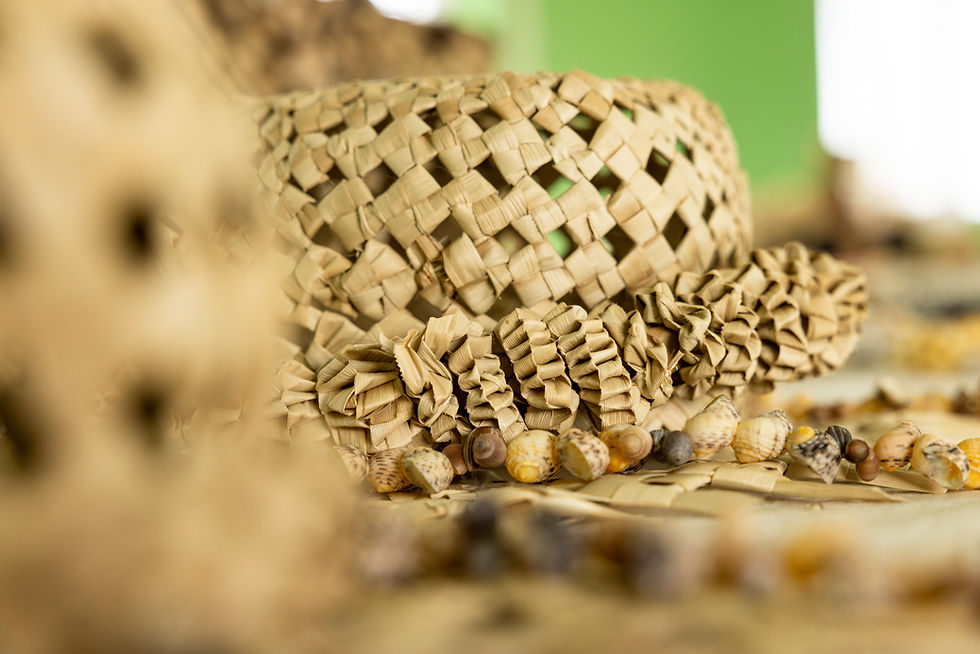The orange carriers of Tahiti: tradition, pride, and resilience in the Polynesian mountains
- loureibel
- Aug 18
- 3 min read
An ancestral journey through Tahiti’s interior trails
Beyond its beaches and luxury resorts, Tahiti hides another face, wilder, more authentic. Each year, during the cool months of the austral winter (June to August), dozens of men and women embark on a demanding journey through the mountains of the Punaruu Valley. For hours, they climb steep, humid trails, carrying heavy sacks filled with wild oranges before descending slowly back to the valley. They are the orange carriers, and on their shoulders they bear not only fruit, but also a story as meaningful as the paths they walk.

A unique natural and cultural legacy
Oranges were introduced to Tahiti around 1775 by European explorers. The subtropical climate, volcanic soil, and mountain altitude created the perfect environment for the fruit to grow almost spontaneously in the island’s highlands. By the 19th century, orange production in Tahiti had grown significantly, with exports reaching markets as far as California and other Pacific destinations. While this trade eventually declined due to difficult access and economic changes, the tradition of the orange carrier remained as a living testimony to the island’s past.
A challenge of body and spirit
Today, orange carriers continue their climbs, some motivated by cultural pride, others for physical training, and many as part of the annual Fête de l’Orange in Punaauia. The route requires between 6 to 8 hours of walking, carrying up to 60 kilograms of fruit, and descending with balance, technique, and endurance.
Not everyone can do it. It takes strength, local wisdom, and deep respect for the mountain. Many young people begin training as children, learning from elders how to read the forest, avoid dangerous trails, and protect the fruit as a precious gift.
Mountain oranges: pure flavor
High-altitude oranges are unlike commercial varieties. Smaller, with thick skins, they are juicy, sweet, and intensely flavorful. Grown without fertilizers or pesticides and nourished by constant humidity, these fruits are wild, pure, and highly prized in local markets. For many families, mountain oranges are more than food, they embody ancestral connections, community pride, and a spiritual bond with the land.
The carriers’ parade: community pride
Every July, Punaauia celebrates the Fête de l’Orange, where carriers parade with their sacks on their shoulders. Young people, elders, women, sports groups, and cultural associations all participate. It is not a competition but rather a celebration of collective effort, local identity, and intergenerational transmission.
Supported by the municipality and widely covered in Polynesian media, the event has become a showcase of Tahiti’s intangible heritage. Through this festival, the community honors those who keep traditions alive without asking for recognition.
An authentic experience for the curious traveler
Today, some guides offer hikes inspired by the orange carriers’ route. This activity is perfect for travelers seeking to go beyond traditional tourist circuits and connect deeply with Tahiti’s nature and culture. Walking through the jungle, gathering fruit, sharing meals and conversations with local residents, these experiences allow visitors to understand Polynesia from within, far from clichés. It is a meaningful way of traveling, one that leaves a lasting impression.
A tradition that keeps walking
Despite the changes of the modern world, the orange carrier continues his path. On his shoulders he carries more than fruit: he bears the memory of his people, the history of the island, and the essential bond with the mountain. With every step, he keeps alive a legacy that needs no stage or spectacle, only the simple act of climbing.




